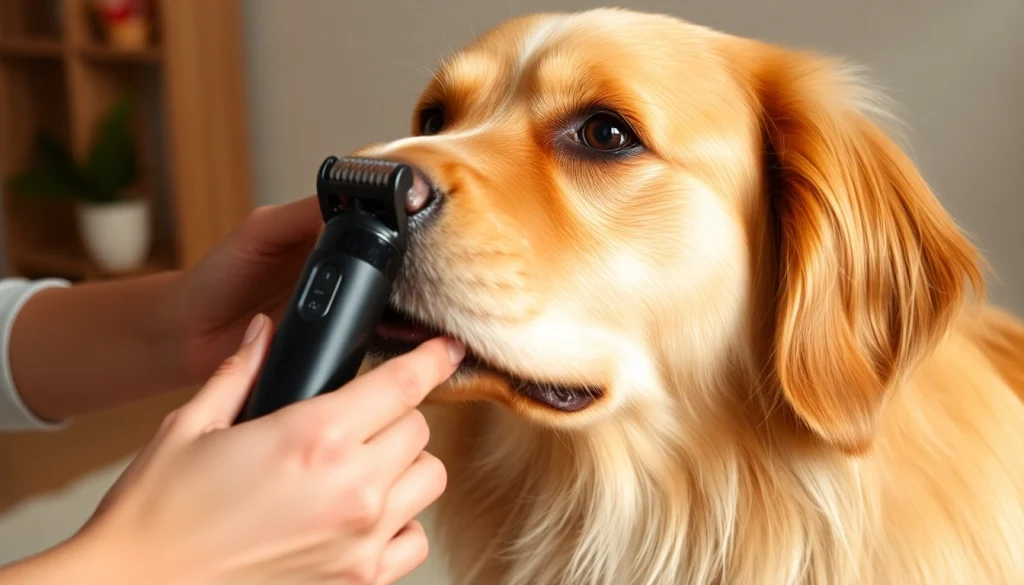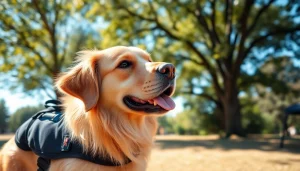Effective Dog Hair Removal Techniques for a Cleaner Home

Understanding Dog Hair Removal
For pet owners, one of the perennial challenges they face is dealing with pet hair, particularly from dogs. Regular grooming and effective dog hair removal techniques are essential for maintaining a cleaner home and a happier pet. Understanding the critical aspects of dog hair removal can make a significant difference in how manageable pet ownership can be.
Why Regular Grooming Matters
Grooming is not merely about aesthetics; it plays a crucial role in a dog’s health and well-being. Regular grooming helps to:
- Reduce shedding significantly. Dogs that are groomed frequently shed less hair around the house.
- Improve skin health. Grooming allows you to check for skin problems, such as ticks, allergies, or infections.
- Enhance bond with your dog. Grooming can be a bonding activity that also calms nervous pets.
Dogs with longer or thicker coats, such as Golden Retrievers and Siberian Huskies, particularly benefit from regular grooming, as it can prevent mats and tangles that can lead to more severe issues down the line.
Common Dog Hair Types
Dog hair comes in various types, each requiring different grooming methods. Understanding these types can help pet owners tailor their grooming strategies effectively. Here are the most common types:
- Single Coat: Breeds like Beagles and Boxers have a single layer of fur that sheds moderately.
- Double Coat: Breeds like German Shepherds and Corgis have a soft undercoat and a coarser outer layer, leading to significant shedding, especially during seasonal changes.
- Wire Coat: This type, found in breeds like Airedale Terriers, requires regular grooming to maintain its texture and to keep the coat clean.
- Curly Coat: Breeds such as Poodles and Portuguese Water Dogs have coats that don’t shed much but can mat easily if not groomed appropriately.
The Role of Tools in Dog Grooming
Having the right tools is essential in effective grooming. From brushes that cater to different coat types to specialized de-shedding tools, the right equipment can make the grooming process easier and more efficient.
- Brushes: Different brushes serve different purposes, such as slicker brushes for detangling and bristle brushes for finishing touches.
- De-Shedding Tools: Tools specifically designed to remove loose hair from the undercoat can help minimize shedding.
- Grooming Gloves: These tools allow for gentle removal of hair while simultaneously giving your dog a gentle massage.
Choosing the Right Dog Hair Removal Tools
Selecting effective dog hair removal tools is critical to the grooming process. The sheer variety available can be overwhelming; however, understanding the options can ease the decision-making process.
Types of Hair Removal Tools
When it comes to dog hair removal, a few essential tools should be in every grooming kit:
- Rakes: Ideal for breaking up tangles and massaging the skin.
- De-shedding Tools: Typically made with stainless steel blades, these tools can effectively remove loose undercoat hair without cutting the dog’s fur.
- Slicker Brushes: Excellent for removing mats and tangles, especially in long-haired breeds.
- Vacuum Attachments: Some modern grooming vacuum systems have attachments specifically designed for dog grooming, helping to minimize mess.
Features to Consider
When investing in dog grooming tools, consider the following features:
- Durability: Look for tools made from high-quality materials that can withstand frequent use.
- Comfort: Ergonomically designed handles can make grooming significantly more comfortable for the user.
- Ease of Cleaning: Tools that disassemble easily or can be wiped down can save time and effort.
Top Products Reviewed
Choosing the right grooming product can be simplified by considering some top-rated options. Here are a few highly recommended tools:
- Furminator deShedding Tool: An effective product designed to reduce shedding in double-coated breeds.
- Hertzko Self Cleaning Slicker Brush: Known for its ease of use and effective mat removal.
- Pet Neat Pet Grooming Brush: A favorite among pet owners for its efficiency in fur removal and ease of cleaning.
Effective Techniques for Dog Hair Removal
Beyond just having the right tools, proper techniques play a fundamental role in effective dog hair removal. Employing the right methods can help keep your home cleaner and ensure a more pleasant grooming experience.
Grooming Techniques
Implementing effective grooming techniques can significantly increase the efficiency of hair removal:
- Start from the Top: Begin grooming at the head and work your way down to avoid tangles and matting.
- Use Short, Gentle Strokes: This will ensure you’re not pulling on the hair uncomfortably.
- Frequency: Regular grooming, as opposed to infrequent, intensive sessions, helps keep shedding manageable.
How to Use Dog Hair Removal Tools Effectively
Correct usage of grooming tools is paramount:
- De-shedding Tools: Use these on dry fur and make sure to follow the grain of the coat.
- Brush Type: Choose the correct brush for your dog’s coat; using the wrong brush can cause damage or discomfort.
- Regular Cleaning: Clean tools after each use to maintain performance and to reduce the spread of allergens.
Tips for Persistent Hair Problems
If your grooming efforts are not reducing hair problems, consider these tips:
- Evaluate Diet: A healthy diet can lead to healthier skin and fur, minimizing shedding.
- Consult Your Vet: If shedding is excessive, there could be underlying health issues that require attention.
- Consider Professional Grooming: Sometimes, a professional can provide services that improve your dog’s coat health beyond home capabilities.
Maintaining a Hair-Free Home Environment
Keeping your home free of dog hair is just as essential as grooming your pet. Here are effective strategies to help manage pet hair indoors.
Cleaning Strategies
Integrating effective cleaning habits can make a significant difference:
- Regular Vacuuming: Use a vacuum designed for pet hair to keep floors and upholstery clean.
- Lint Rollers: Handy and effective for quick clean-ups on clothes or furniture.
- Washable Pet Blankets: Keep these handy on your furniture; regularly washing them will trap hair before it disperses.
Furniture and Carpet Care
Keeping furniture and carpets free of dog hair requires a dedicated strategy:
- Fabric Selection: Choose furniture fabric that is resistant to hair clinging.
- Regular Deep Cleaning: Schedule periodic professional cleaning for carpets and upholstery to manage hair accumulations better.
- Pet-Safe Upholstery Protectors: Consider investing in protectors to prevent fur from embedding deeply.
Using Air Purifiers
Air quality can be affected by pet hair, so consider implementing air purifiers:
- HEPA Filters: These can significantly reduce pet dander and hair in indoor air, benefiting owners with allergies.
- Strategic Placement: Position air purifiers in areas where your dog spends most of their time to maximize effectiveness.
Additional Tips for Dog Owners
To create a harmonious environment for both you and your dog, establishing a routine and a positive attitude can make a major difference.
Establishing a Grooming Routine
Creating a consistent grooming routine can make the process smoother:
- Setting a Schedule: Regular grooming sessions prevent mats and heavy shedding.
- Incorporate Play: Consider adding playtime into grooming sessions to make the experience more enjoyable for your pet.
Encouraging Your Dog During Grooming
To keep grooming positive:
- Use Treats and Praise: Reinforce good behavior with treats and positive verbal affirmations during grooming.
- Short Sessions: Start with shorter sessions, gradually extending them as your dog becomes more comfortable.
Choosing the Right Time for Grooming Sessions
Timing can significantly impact the grooming experience:
- After Exercise: Consider grooming after a walk to ensure your dog is calm and relaxed.
- Quiet Environment: Choose a time that is free from distractions to help your dog remain focused and calm.







